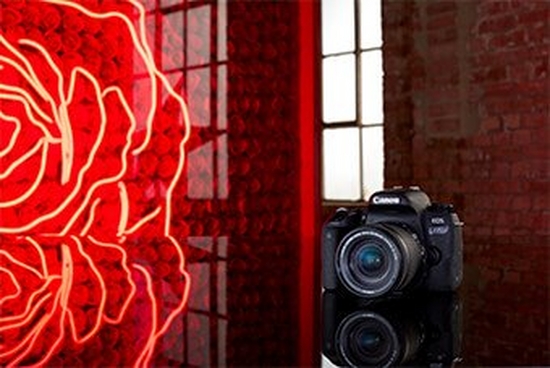DSLR camera is One of the most popular and complicated photography devices.
Digital photography is now more accessible than ever, thanks to cameras that can autofocus and store thousands of photos on their internal memory card — ideal for both professionals and amateurs alike.
However, understanding your camera options before making a large purchase is still critical.
A DSLR is a term that has come to symbolize digital cameras. However, a digital single-lens reflex camera (notable for allowing interchangeable lenses on the same camera body) is only one type of digital camera.
Learn more of what makes DSLR cameras so famous to see if they’re right for you.
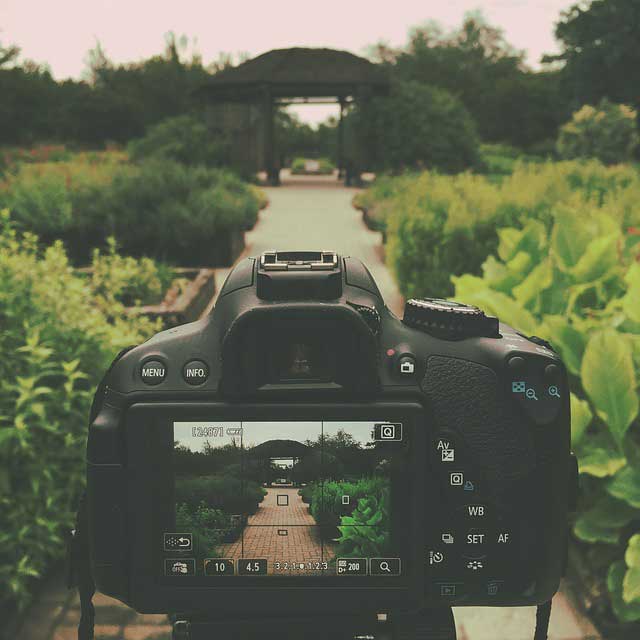
How a DSLR camera works.
Have you ever wondered how your DSLR camera works?
As you seek an answer, we offer some insight into your journey to better understand your DSLR.
When light enters the lens of a digital SLR camera, it is reflected by a mirror inside the camera body, allowing the photographer to see their subject through the optical viewfinder.
When you take a photo, the mirror swings out of the way, allowing light to pass through to the digital image sensor, where it is saved to an SD card.
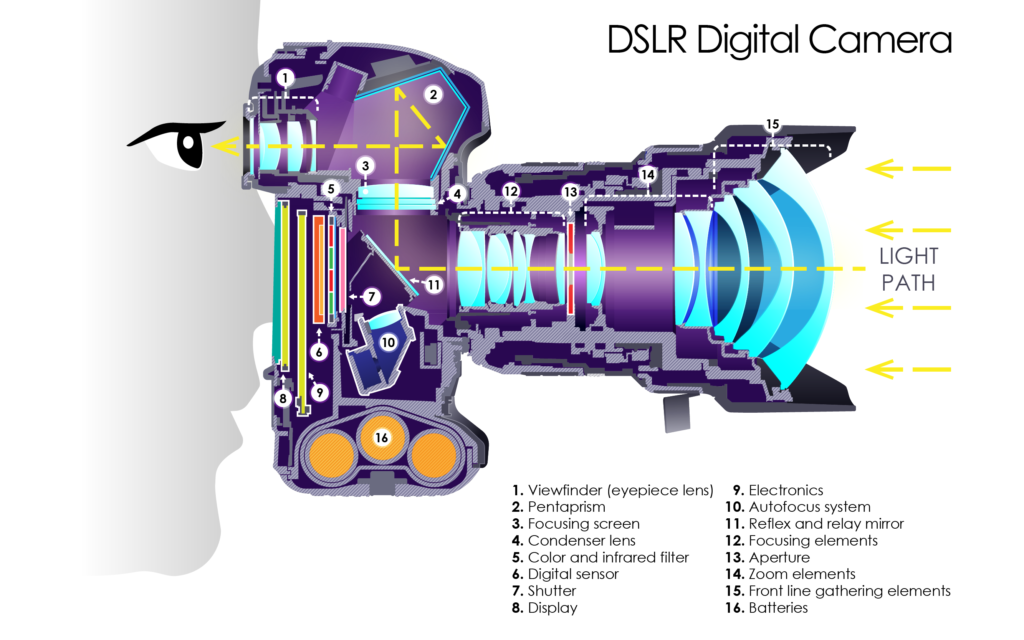
Unlike mirrorless cameras, where light is directed directly to the image sensor and the photographer sees what they’re shooting through a rear LCD screen or an electronic viewfinder, DSLRs use a lens to direct light to the image sensor.
Here’s a quick overview of how the camera works:
1. Light enters the lens, is reflected by the mirror, passes through a pentaprism, and enters the viewfinder.
2. This means that the image you see in the viewfinder is a true representation of the image that the camera will capture.
3. When you press the shutter button, the mirror flips up, allowing the camera’s internal sensor to capture light.
That’s why, when you take a picture, your viewfinder goes black for a fraction of a second! There is no light reflected into the viewfinder when the mirror is flipped up. Of course, once the image is captured, the mirror returns to its original position, and you’re ready for your next shot!
So that’s how your DLSR camera takes a picture.
Types of DSLR image sensors.
While sensor sizes vary between DSLR cameras, these sensors are large enough to capture enough megapixels to blow your smartphone camera’s image quality out of the water.
Full-frame and APS-C sensors are the most common. Full-frame camera sensors, which are the same size as 35mm film, are the industry standard. Because APS-C sensors are slightly smaller, they have a lower focal length known as “crop factor.”
This smaller field of view can be compensated for with specific lens attachments, but it’s something to consider when looking for the best APS-C or full-frame DSLR.
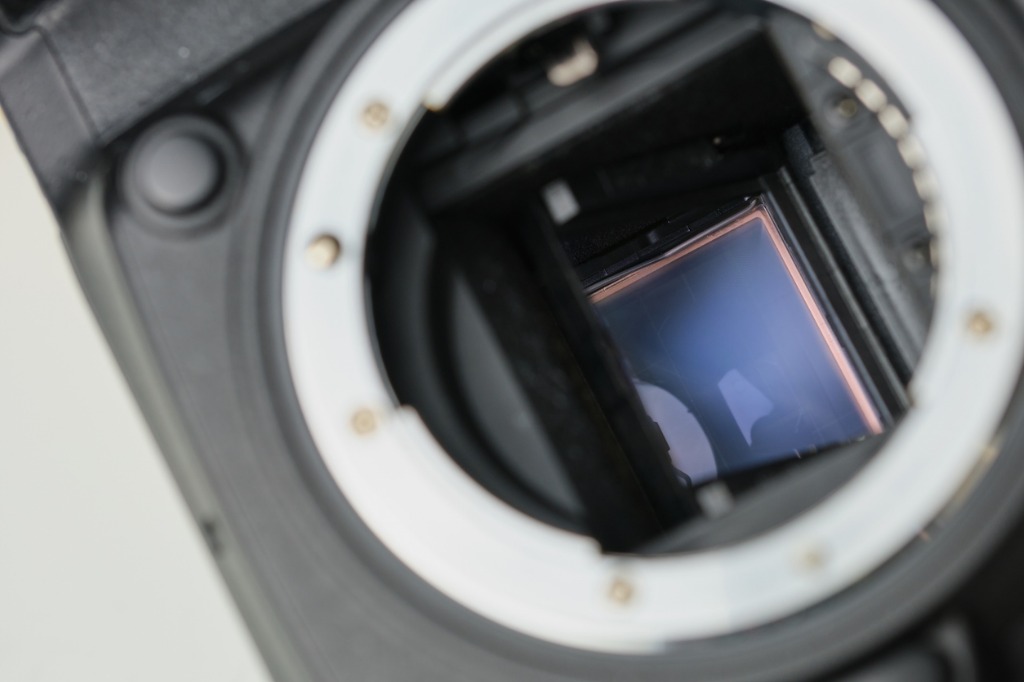
The benefit of interchangeable lenses
DSLR cameras allow you to combine the camera body with your desired lens attachments, such as a fisheye or zoom lens. You can get various types of lenses that serve different functions and give you different looks. DSLR cameras are far more versatile in this regard.
Whether you want to shoot intimate portraits or stunning landscapes, knowing the best focal length for each situation will help you choose the best lens for your DSLR.
In previous articles, we discussed how to choose a lens.
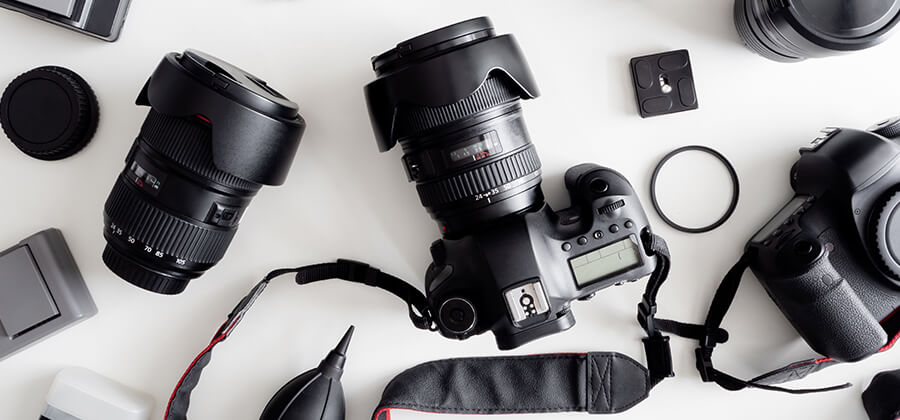
A few more DSLR benefits.
Low light: DSLR cameras are ideal for shooting in low light because their larger sensors can capture more light.
DSLRs have better autofocus features than point-and-shoot cameras, allowing you to focus and shoot faster, capturing more high-quality images.
Battery life: Because DSLRs do not require the digital screen to be turned on all the time, they use very little power, resulting in longer battery life.
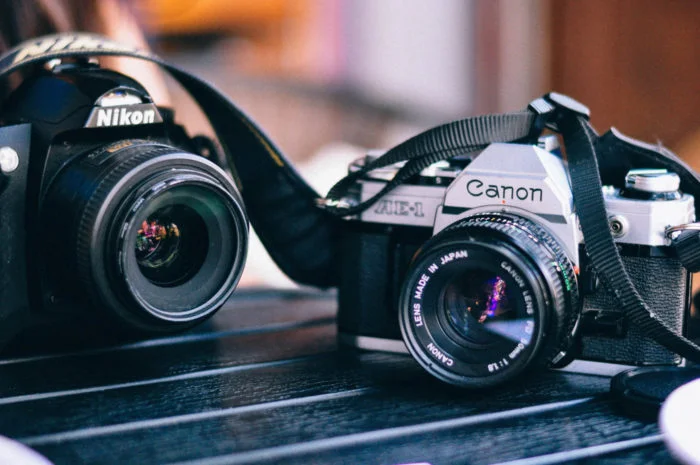
The disadvantage of DSLRs.
While digital cameras allow you to see your shot immediately after taking it, unlike film, what you see in the viewfinder may not be exactly what is exposed to the image sensor in a DSLR camera. This is due to the fact that DSLRs rely on the mirror for some of their focus. You may not be able to see exactly what your camera captured until you edit your shots.
You get what you see with a mirrorless camera — the image you see is exactly what is exposed to the sensor. This allows you to fine-tune camera adjustments in real time.
Mirrorless or DSLR?
DSLRs are popular among photographers because they are durable, versatile in terms of their ability to pair with a variety of lenses and attachments, have a long battery life, and provide a faster shooting speed with better autofocusing. However, there is a difference between what you see in the viewfinder and what is in the exposure, which mirrorless cameras do not have.
Both offer continuous shooting (or burst mode) and image stabilisation settings, but mirrorless cameras outperform DSLRs when it comes to video recording. To put it simply, the mirror in a DSLR makes video focusing more difficult than with a mirrorless camera, which can capture full HD video better.
Mirrorless cameras are also lighter and more compact because the camera body only needs space for a sensor rather than a full mirror system. Learn about mirrorless cameras from music photographer Chad Wadsworth, who was an early adopter of the camera type.
Conclusion
A DSLR is an excellent choice for any budget or subject. The single lens, mirror mechanism of DSLR cameras is well-known. This allows you to see a preview of the photograph you’re about to take in its exact optical view.
DSLRs have the advantage of fitting into any budget. They’re ideal for professional photographers since they provide them complete control.
The best DSLR or camera for you will be determined by the subject and situation you intend to photograph. Different DSLR models and lenses provide different benefits, but armed with this knowledge, you should have an easier time finding the right camera for you.
Check out our articles and take control of your new DSLR!

